Peru Day 3 The Heart of the City
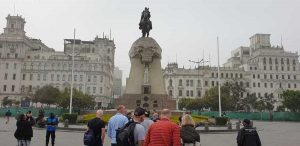
Our guide today is Giermo. He tells us that every city has a heart, a centre or central square where people gather to identify, communicate and protest. Does Aotea Square do this for Auckland? Perhaps for protests. London has many hearts depending on your interest. Trafalgar Square for celebrations and demonstrations, the financial heart is now split between Bank and Canary Wharf in the old Docklands. Theatres are in Soho and so on. But today we are off to find the heart of Lima and perhaps Peru. A minibus collects us and all our luggage and we ride as Giermo tells us that Lima is a city of eleven million, but only one hundred and forty metres above the sea. There are forty-two mayors who govern the different districts of the city. Each mayor has a cabinet of councillors, so there is a lot of politics in the City which also has a top mayor. Only twenty percent of Peruvian politicians are women and there are now one hundred and thirty in Congress. Election posters with images of friendly-faced men can be seen everywhere as there is an election soon.
We learn that Peru exports mangos and asparagus – to be found most of the year in British supermarkets. Coffee beans from the Amazon are also exported as Peruvians don’t drink much coffee, preferring coca tea, the leaves of which also come from the Amazon. There is not much smoking here, though we did smell weed on the cliffs yesterday, just as one does walking around London. There are one and a half-million Venezuelans in Peru and they do smoke, according to Giermo.
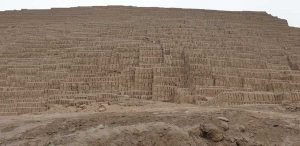
Inca culture (centred in Cusco) spread extensively over neighbouring areas of what is now Columbia, Bolivia, Chile and northern Argentina. It was the dominant rule until the Spanish turned up, but it’s important to know that there were great civilisations here before the Inca and our first stop is at one of many pre-Inca temples around the city and according to Giermo, human sacrifices were made here. The temples have survived two thousand years because there is no rain to wash away the mud bricks. Giermo doesn’t remember rain in his lifetime – the last downpour being in 1978. The ancients also understood earthquakes and employed anti-seismic construction methods, so that the buildings moved with the undulations of the Earth. Now we drive through the historic upper-class suburbs built by the Spanish. The whole area is planted with Olive trees brought from Spain and planted in the green spaces between the houses. The olives are harvested, pressed and the oil given to local people. Some of the trees are four-hundred years-old and an ancient oil press is preserved and on show.
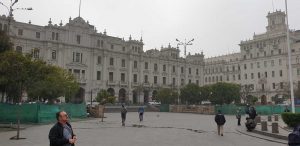
The main square is home to the usual colonial architecture of the period: solid,impressive and grand but nothing outstanding.
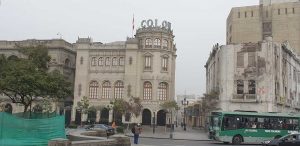
It is dominated by an equestrian statue of General Grau. In the other, more colourful square, there is a Cathedral, the Presidential Palace, a Theatre and various government buildings. It’s not crowded with people, so I suspect that any talking here happens indoors. It also says nothing of Peru, from what I’ve seen so far.
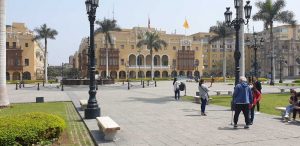
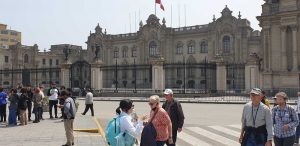
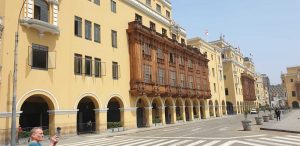
The group is to visit the museum to look at Inca gold in a vault, but we all need to have our vaccination passports to show, plus a mask. I can’t find where I’ve stored it on my phone and my NHS app doesn’t work here.
I just wait and another of our party, desperate for coffee also gives it a miss.
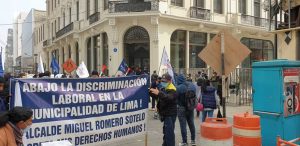
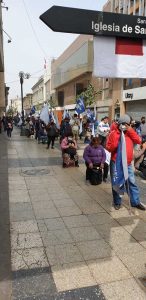
Suddenly, we come upon a very loud demonstration. Peruvian people are demonstrating in lines, chanting and blowing very loud plastic horns. The protest is against the corruption of the current Top Mayor. They are supervised by the police and the only violence is on the ear-drum. Suddenly police reinforcements arrive, but it seems they are to relieve the current force. The demonstration seems to be on the move and we find ourselves walking along side them in the opposite direction.
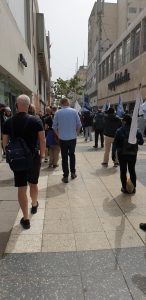
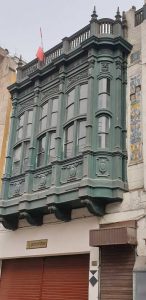
This central part of Lima is awash with protected historic buildings built by the Spanish. Many of these have wooden balconies which are shuttered with lattice-work so their inhabitants can see out but no one can see in.
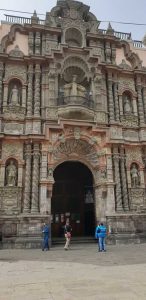
Around the corner is the Basilica Neustra Sénora La Merced. It is, like many South American Catholic churches, packed with gruesome imagery with bloody statues of Christ, emphasising his suffering. The message is clear that the suffering poor are better of than the Saviour. The grandeur is designed to intimidate.
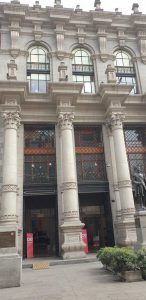
Opposite the church is a building which once housed the Inquisition, so that once tortured and converted, the victim could be escorted across the road to be guided in the faith.
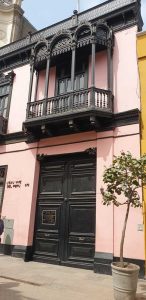
We have time for a visit to the catacombs. The Spanish were here for 300 years and buried their dead under the church above. We are required to wear our masks to get in and descend into the earth and walk along tunnels either side of which are bones (mostly femurs) and skulls. Bodies were buried in lime and after a time, the remains were fished out for a new lot. Gruesome remains are displayed and lit. No photography is allowed.
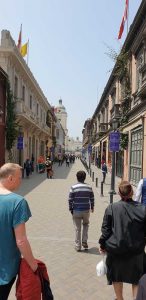
Everywhere people are wearing masks, in busses and on the street. Peru was severely affected by Covid and it looks as if masks have been their main weapon. Peruvians are gregarious and gather in public spaces, but you can see the apprehension in some when a non-masked person approaches.
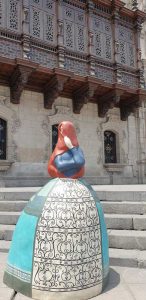
We walk to our minibus and are taken to the airport for our flight to Arequipa. Showing my boarding pass on my phone works just like most other places in the world. It’s a short flight but the Hotel transport has failed to arrive, so we taxi into the city through ugly looking suburbs of half finished houses and other unidentifiable buildings. It takes forever as this is the second largest city in Peru.
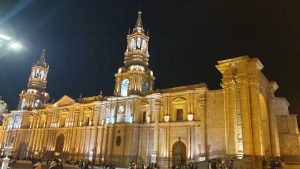
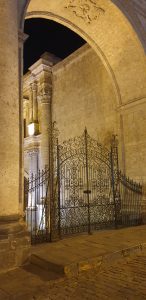
Once settled into our hotel, we venture out for an evening stroll – straight down the hill to the main square.
It is busy with people and with the buildings lit up, looks very beautiful. It is dominated by the Cathedral and the other three sides have arched walkways where small shops are plying their trade. On the bottom side of the square there are balconies with inviting looking cafés. Young people with menus are trying to entice us upstairs. Further around is another interesting-looking church, closed now but the cloister looks worth an explore tomorrow.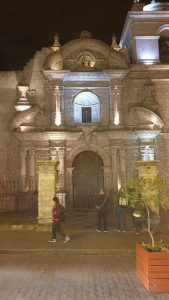
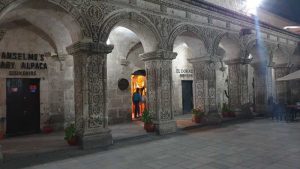
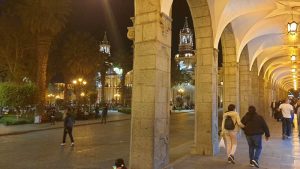
We are off to a recommended restaurant in the other direction.
I try a lemonade made from a berry found in the Amazon, it is delicious and it goes with my fresh-water shrimp dish. We are in a covered courtyard surrounded by heaters like the ones in London and everywhere else in the world. Suddenly a man at the next table falls backwards onto the floor. Doctor Ann, who is our tour group, leaps to help, asking questions, inspecting the back of his head for wounds and dispensing empathy. He looks pale but is otherwise unharmed. Dr Ann returns in time for her food. A few minutes later the man’s partner also faints and collapses to the ground. She also recovers and they continue their dinner as if nothing had happened. A mystery.
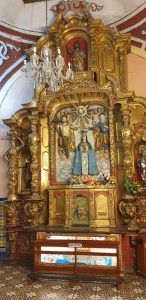
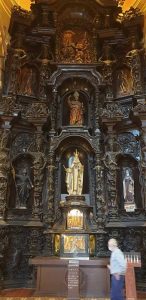
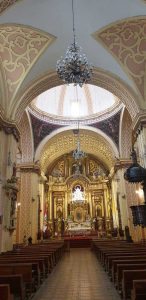
Great record of historical info. I’m a bit worried about those 2 people falling back and fainting ……. Hope it’s not the food 😬